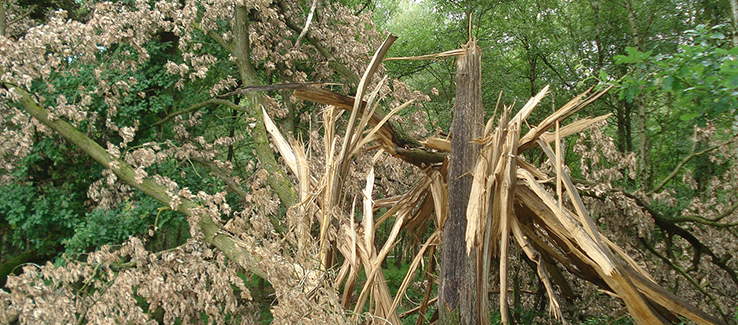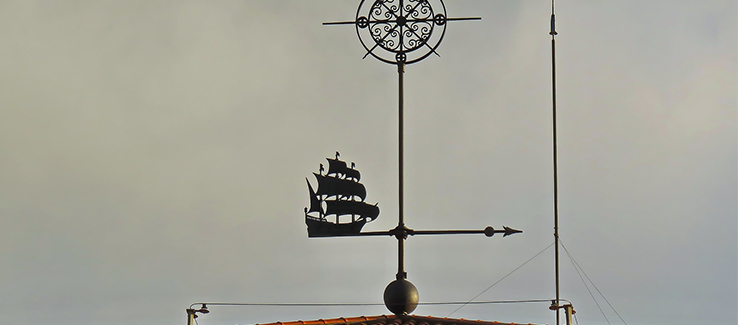
Prevent catastrophic damages to your property and person when a tree suffers a lightning strike. Knowing what happens to a tree when lightning strikes it will help you spring into action before it can cause a life-threatening situation.
fasttreeremovalatlanta.com gathered the following information on the effects of lightning strikes on trees, what happens to them after a lightning strike, and the consequences of leaving them.
Tree Struck by Lightning
According to weather.gov, the typical lightning flash is about 300 million Volts and approximately 30,000 Amps. In comparison, a household current is a mere 120 Volts and 15 Amps. When that much energy is released on a tree, all of its biological functions and structural integrity are severely impacted. For example, along the path of the strike:
- Water evaporates
- Sap boils
- Steam is generated
- Cells explode in the wood
All of these instantaneous happenings can result in strips of wood and bark peeling or being violently blown off the tree.
Why do Trees Explode When Struck by Lightning?

Trees can explode when struck by lightning. The violent electric current is carried throughout the tree by its water-conducting sapwood below the bark, heating it up and instantaneously boiling the water. The resulting pressure from the steam can make the trunk and limbs burst. This happens especially with infested or diseased trees that are already dying or rotting.
Some trees are more likely to be struck by lightning and explode than others. Some of those are:
- Eucalyptus trees
- Oak trees
- Pine Trees
Tall trees like these are at the most risk of getting struck by lightning due to their impressive height. High-water content trees like ash and willow trees are more likely to attract lightning strikes and potentially explode.
Trees may also explode when temperatures drop far enough below freezing to freeze the tree’s sap, causing internal pressures to rise. Wildfires can cause trees to explode when the extreme heat literally boils the tree’s water and sap content, acting like a volatile pressure cooker.
Note: Eucalyptus trees will explode when gasses from eucalyptus oil (naturally produced by the tree) are ignited, instantly obliterating the tree.
Can Lightning Strike a Tree and Not Burn it?
Yes. If a tree struck by lightning doesn’t explode or ignite and burn to the ground, it may survive for months or years with its injuries. Lightning-damaged trees are more susceptible to boring insects, diseases, and rapid decay.
Can a Palm Tree Survive a Lightning Strike?
Not likely. Some palm trees may survive six months or longer following a lightning strike. However, lightning strikes are typically fatal to palms, and the resulting injuries cannot be treated. Palms with leaves that are collapsed against the trunk or with broken crown shafts should be removed even when leaves are still green.
Will a Tree Struck by Lightning Survive?
Possibly but not likely. Trees struck by lightning that survive until the following spring and leaf out are very likely to recover from their damages. Another way to help repair lightning-damaged trees is to prune out impacted or broken branches and any torn wood. Avoid any extensive pruning until at least one year has passed so you can assess the extent of the damages.
Depending on the size and location of your lightning-stricken tree, you should call an experienced professional tree service or an ISA-certified arborist to evaluate the tree and take any preventive measures necessary (including removal) to keep your home and loved ones safe.
Tip: Locate an ISA-certified arborist in your area by visiting treesaregood.org/findanarborist
Protecting Trees from Lightning
While it is impossible to predict where and when lightning will strike, you can install a lightning protection system on your tree to minimize any damage. A lightning protection system is a copper cable line (lightning rod) that runs along the tree, intercepting a lightning bolt and directing it to the ground as opposed to the tree absorbing the strike.
Lightning rods can also be attached to your home’s roof and connected to a grounding system, allowing the electricity to disperse into the ground below. Lightning strikes hit trees because they are often the tallest things in the area. A lightning rod on your roof will not only help conduct an electrical power surge away from your home, but it can also help keep lightning from striking your trees.

Tree Hit by Lightning
In this article, you discovered what can happen when a lightning strike instantaneously evaporates all of the moisture within a tree, what can happen to the tree over time, and the consequences of doing nothing.
Knowing what to do after your tree is struck by lightning will help you take swift action to get it evaluated and treated to potentially save it.
Ignoring your tree after a lightning strike will leave your property vulnerable to the tree’s catastrophic collapse, endangering your home and loved ones.
Sources:
weather.gov/safety/lightning-power
edis.ifas.ufl.edu/publication/EP598
arbordayblog.org/treecare/protecting-trees-from-lightning/
hort.ifas.ufl.edu/woody/lightning.shtml
(404) 220-9965
(404) 220-9963
To view the orignal version of this post, visit: https://www.fasttreeremovalatlanta.com/what-happens-when-lightning-strikes-a-tree

No comments:
Post a Comment